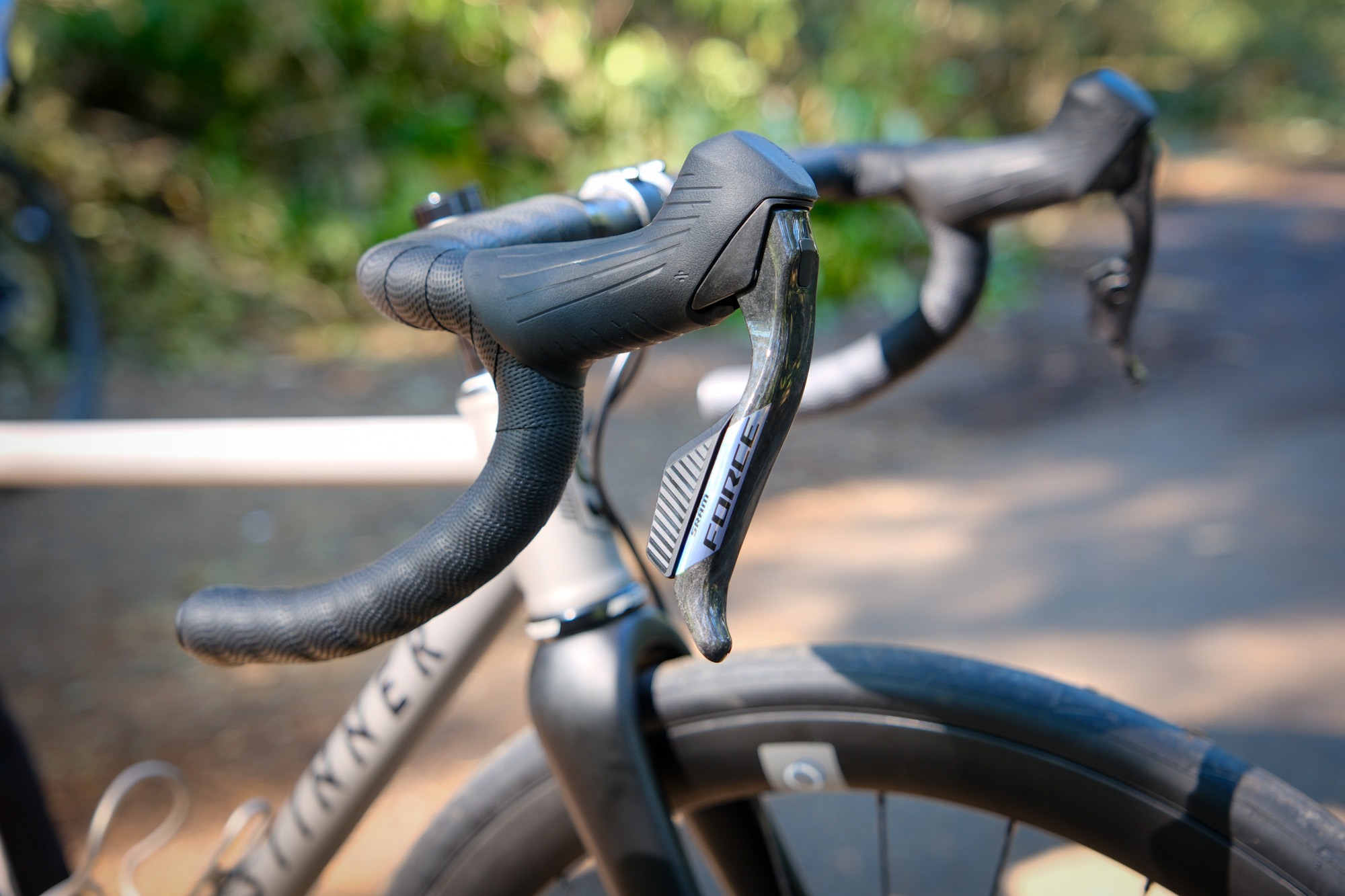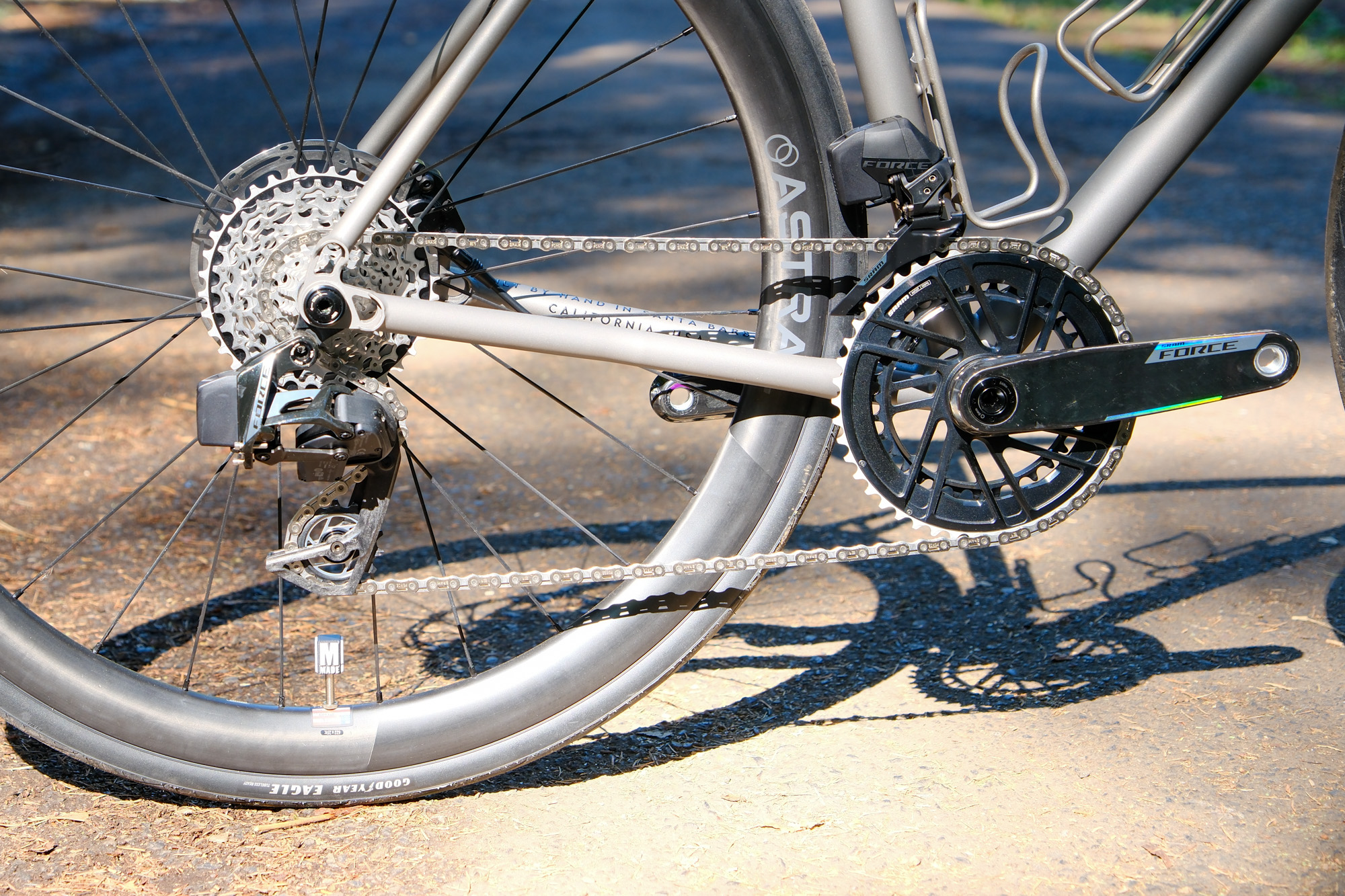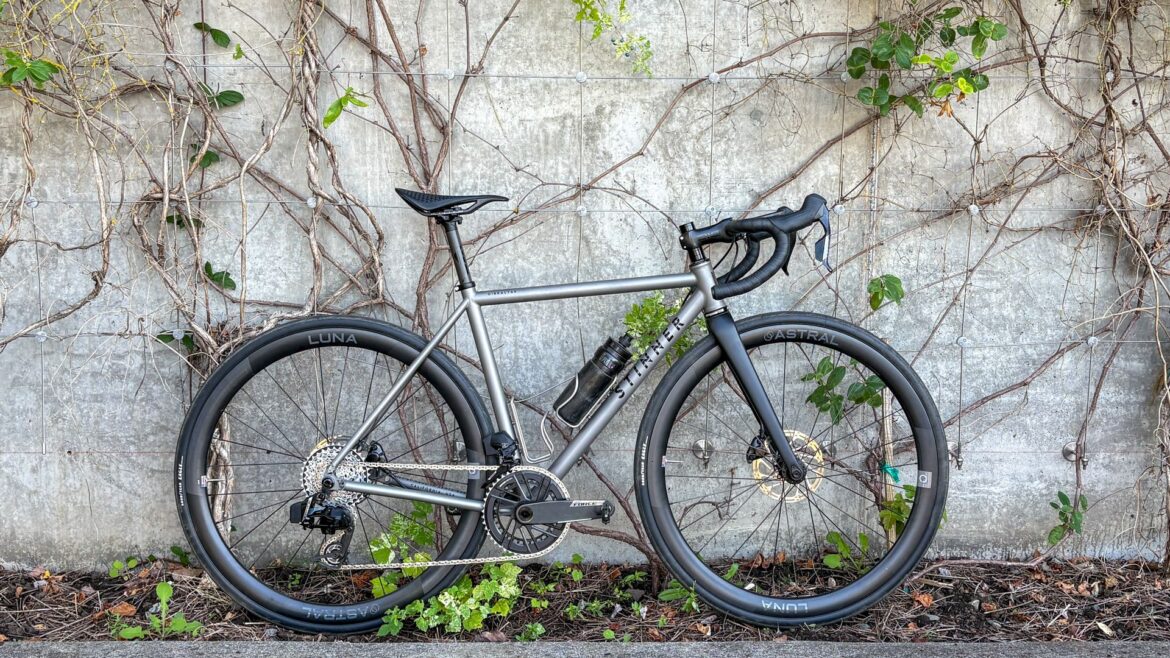California bike brand Stinner Frameworks is making big waves in Santa Barbara. The once-boutique builder has grown into one of America’s largest frame manufacturers. Aaron Stinner began brazing custom one-offs in his garage back in 2010; today, Stinner is a modern, partly automated, small-scale factory churning out around 2,000 frames a year, and that number is rising fast. With robotic welding, CNC machining, laser cutting, and in-house finishing (from powder coat to Cerakote and titanium anodising), the company now has the capacity to produce roughly 3,000 frames annually for both its own label and a growing roster of OEM partners. In doing so, Stinner is showing a pathway for U.S. bike manufacturing to scale by blending boutique craftsmanship with automation, efficiency, and a modern workspace.
Stinner’s push into stock models is also driving some of this momentum. While the brand still builds custom frames with rider-specific geometry and bespoke paint, the Stinner Select and Podium programs lean hard into accessibility and delivery speed. The stock lineup offers some of the company’s most popular models in stock sizes and limited paint schemes, with framesets and complete builds ready to ship in days rather than months. As the company puts it, the aim is to deliver “the best Stinner offers without the wait or the potential confusion of custom.”
Meet the Gibraltar Podium
(Image credit: Anne-Marije Rook)
Named after the iconic Gibraltar Road climb above Santa Barbara, the well-regarded Gibraltar road bike was designed for riders “who seek precision, speed, and the thrill of conquering challenging ascents. Whether you’re pushing through steep gradients or cruising smooth descents, this road bike provides a responsive and agile ride that adapts to the rider’s every move.”
There are two frame options: Select and Podium. The Select version uses double-butted Columbus Zona steel tubing and comes in two powder-coated finishes. The Podium, reviewed here, is the pinnacle of the brand’s stock line, crafted from straight-gauge titanium with a bead-blasted raw finish. It blends the classic look and longevity of titanium with modern features like internal cable routing, 700×32 mm tyre clearance, and UDH-compatible dropouts. Stinner also sticks to long-standing industry standards for the Podium Series with a round 27.2 mm seatpost, flat-mount disc brakes, and a 68 mm T47 bottom bracket shell, ensuring versatile build options and easy maintenance without any proprietary quirks.
As with all its stock offerings, the goal is to deliver a no-compromise frame without the waitlist, producing a dependable performance road bike built to handle years of hard riding.
The Gibraltar Podium is offered either as a frameset or in two SRAM-equipped complete builds. Pricing runs from $2,895 for the frameset up to $6,995 for the top build, which includes a SRAM Force AXS groupset, ASTRAL Luna carbon wheels, and a finishing kit made up of Easton and Stinner-branded components.
The Ride

(Image credit: Anne-Marije Rook)
I’ve been on a steady rotation of test bikes lately, but the Gibraltar is the one that felt most like home. At 5’5″ (167 cm), I’m on the shorter end of the height chart, and most off-the-rack bikes demand some kind of compromise or fit tweaks to feel comfortable and in control of a bike. However, the Gibraltar, in its smallest size offering, comes pretty close straight out of the box — just as I knew it would.
I reviewed Stinner’s Carrizo Select all-road bike last fall, and the Gibraltar’s geometry isn’t all that different. A slightly lower stack, shorter top tube, steeper head angle, a touch more bottom bracket drop, and a tighter rear triangle — subtle changes for a familiar yet livelier, more eager, ride.
The Gibraltar’s numbers lean toward the endurance end of the road spectrum. It’s got a tallish stack paired with a moderate reach, which puts the rider in a more comfortable, less stretched-out position. Add in a generous bottom bracket drop and the bike sits low and stable, giving it that “planted” sensation through corners and on fast descents.
Up front, the combination of a relaxed head angle, higher trail, and a longer wheelbase provides predictable handling, and the steeper seat tube angle promotes a forward-balanced weight distribution, keeping the front wheel engaged even on steeper climbs.
I made only a few small adjustments: I dropped a couple of spacers and swapped out the stem for a longer one for a slightly more aggressive position, and I swapped out the saddle for my preferred one.

(Image credit: Anne-Marije Rook)
On the road, the Gibraltar strikes a pleasant balance of control and liveliness. It’s certainly more endurance-leaning than crit-ready, but by no means dull. It rolls along with pace, snaps forward when you stomp on the pedals, handles intuitively and stays composed on technical descents. The tighter rear end (compared to the Carrizo) gives it a playful, liftable feel, while the deeper bottom bracket keeps it grounded when carving through the turns.
The dose of plushness from the 32mm tyres was especially welcome on Portland’s cracked, poorly maintained pavement. These days, 28s are reserved for race bikes only; everything else benefits from the added comfort and control of 32s and up.
SRAM’s wireless 2x Force drivetrain performed flawlessly, as always, and while the finishing kit isn’t particularly noteworthy, I did appreciate the hand feel and shallow drop on Stinner’s own-branded AR handlebar.
It’s unusual but great to see carbon wheels on a titanium bike of this price point, and as an Oregonian, it’s fun to see a local brand represented (Astral builds its rims in Eugene). The Astral Luna wheelset doesn’t particularly stand out, but it suits the bike nicely: not the lightest nor the stiffest, but smooth-rolling on and off pavement, clean-looking with an understated vibe, and capable of accepting a wide variety of tyre widths (up to 52mm).

(Image credit: Anne-Marije Rook)
The complete build invites exploration. Those long days in the saddle, rolling across mixed backroads and stacking up plenty of vert without thinking twice.
For a sub-$7k complete build, it’s hard to find a real fault. If I had to nitpick, it would be the decals: simple stickers that look a bit cheap and are not at all on par with the bike’s quality.
As a first titanium bike or an all-day road machine, this build makes a great starting point. But if I were buying one for myself, I’d start with the frameset and build it up with a higher-end finishing kit and lighter wheels. You could create an absolute dream build around the Gibraltar Podium frameset and still come in well under the price of many mass-produced, overseas-made bikes, and get a far superior ride quality.
Even as spec’d, though, it’s a joy to ride: sporty, polished and unmistakably handcrafted. The classic aesthetics, modern features and signature titanium ride feel deliver an ideal blend of smoothness and snap. For riders who spend most of their time on tarmac but want a bike with personality and poise, the Gibraltar Podium is easy to love at a great value.
Verdict

(Image credit: Anne-Marije Rook)
As a complete, top-end build just under $7k or a $2,895 frameset, the Gibraltar Podium is a compelling value. You’re getting a handmade, made-in-the-USA titanium frame with thoughtful geometry, long-term durability, craftsmanship and ride quality you won’t find in mass-produced alternatives made overseas.
It’s the kind of bike that could easily become a lifer, and one that only gets better as you upgrade it over the years.
